When you are building or buying a PC, storage is an important decision that might not be as difficult as it seems. For most, SSD is the logical option for speed and durability, but HDD also offers excellent value for money if speed is not a priority. Of course, for best performance, there's the option of using both storage types for fast access as well as long term storage. In this buying guide, we look at all of the options in detail.
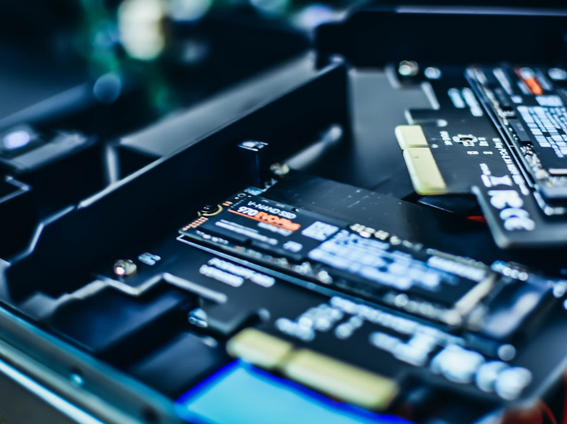
An essential component in any build, storage enables you to keep all of your data, files and games stored securely using SSD (Solid State Drives) or HDD (Hard Disk Drive), or using a combination of both storage solutions to optimise your workflow and gaming performance.
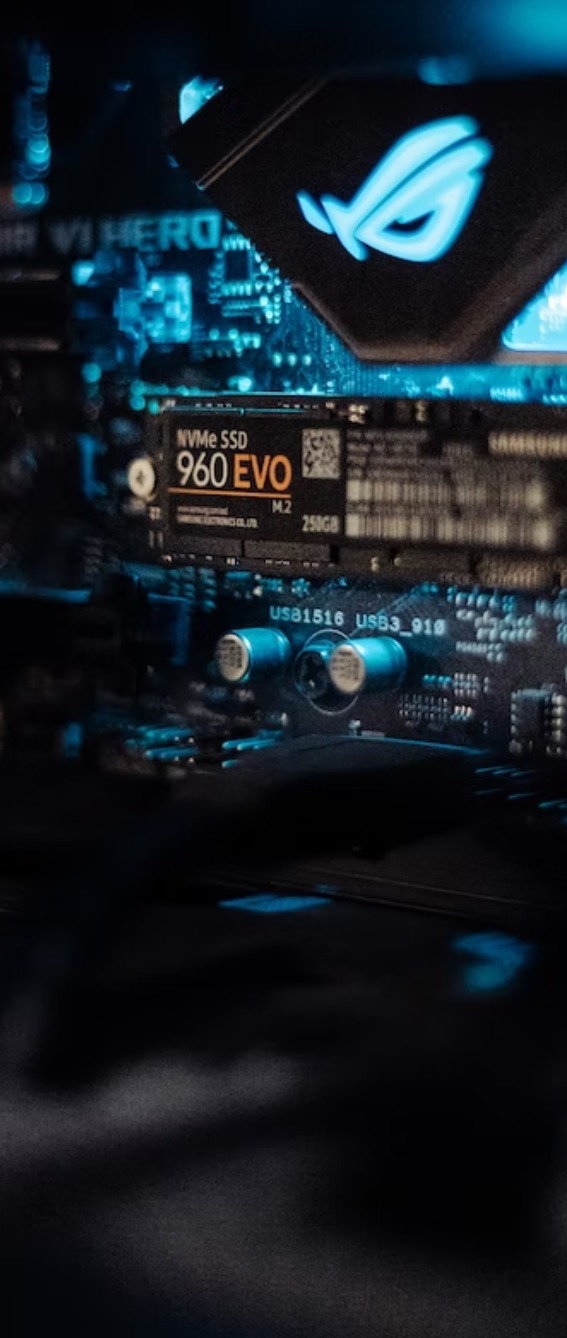
SSD stands for Solid State Drive, which utilises NAND flash memory cells (made of silicon) and a flash controller to store and retrieve data. Flash commonly refers to the speed in which the data is read and written, as every block of data can be accessed at a consistent, very high speed. SSD is also extremely beneficial for different workloads as there is no delay in accessing random or sequential data. Whether you are accessing one large file, or many files stored in different blocks, you can expect the same performance.
SSDs are also more efficient, consuming less than half the energy of a HDD in most cases. This makes SSD much more attractive in server builds, though they do cost more for the initial build - the performance, lifespan and power usage often covers the excess cost.
Manufacturers are able to produce large capacity SSDs by stacking the flash memory cells in a grid and in layers. The data is represented as bits (digital signals) when stored on NAND - flash memory - cells. There are four types of SSD cell - the number of bits stored on a cell determines the type of flash memory used – SLC, MLC, TLC and QLC.
Single-level cell (SLC) flash memory contains 1x bit per NAND cell.
Multi-level cell (MLC) has 2x bits per cell.
Triple-level cell (TLC) has 3x bits per cell.
Quad-level cell (QLC) contains 4x bits per cell.
When purchasing SSD, this will matter to you based on what you need from a storage device. For instance, TLC flash, when compared to SLC, can be produced and sold at a lower cost and is available in larger capacities, except it has a shorter life span and slower read and write speeds. MLC and TLC are often ideal in consumer SSD products, with SLC being used for business and enterprise.
Having no moving parts, SSD has a much longer lifespan (over 5 years) than traditional HDDs, which use spinning magnetic platters and a mechanical system for reading and writing data. For durability and value for money, and SSD is a great choice with a number of excellent use cases: -
Gaming: fast load times and asset retrieval)
Storage of Operating System: fast system boot times)
Most used applications: load your favourite applications quickly
Small PC builds: SSDs take up very little room inside a PC case, usually laying flat on the motherboard
An SSD speed ranges from 400MB/s to 7000MB/s using NVMe interface, which greatly dwarfs HDD speeds.
A HDD (Hard Disk Drive) is an extremely affordable, large capacity and long term (archival) storage solution that offers relatively fast read & write speeds. HDDs are mechanical components, using magnetic platters, which are that spin at a speed measured in RPM (Revolutions Per Minute). Data is written using mechanical arms called 'heads', writing zeros and ones, and reading this data uses the same mechanism.
Available in colossal sizes of as much as 20TB in consumer units, HDDs can be used to store massive files, and a typical 7200RPM HDD read/write speed generally sits between 80MB/s to 160MB/s.
HDDs are, much like SSD, versatile storage mediums, and have not been replaced by the newer technology due to HDDs being so affordable to produce and purchase in the mainstream. Although SSDs are more reliable, HDDs do have a lifespan of three to five years (recommended), making them excellent choice for most PC build types, and for long term storage/archives. HDDs are just as useful in a home PC as they are in surveillance systems and servers.
SSD and HDD Form Factors & Interfaces
For either storage type, connecting to your motherboard and power supply is very simple. The interface type you choose to use with your SSD or HDD can affect the speed, however.
SSD Form Factors
2.5": The first iterations of SSD, and using SATA interface, this form factor offers a compact drive for any size build
M.2 2280: The most common M.2 form factor, and widely adopted by many manufacturers in fast speeds and high capacities. First two digits (22) is the width in millimetres, and last two digits represent the length in millimetres.
mSATA: Not a very common SSD storage drive, and usually seen in laptops rather than desktop.
M.2 2242: Another popular SSD in laptops, and less popular in desktops over the M.2 2280 form factor, due to capacities and pricing
PCIe Card: Ideal for older motherboards that do not support M.2 NVMe
HHHL: Half height-Half Length PCIe cards that are large capacity and performance driven for Enterprise and business. Less common in retail, and mostly sold in the second user market.
SSD Interfaces
M.2: Manufactured with or without heatsinks/heat spreaders, M.2 is both an interface and a form factor. The key specification to look for is PCIe version and NVMe interface, which relates to how fast the M.2 storage is.
PCI Express NVMe: Offers various versions and high speeds. You will see these specifications as the PCIe version number, followed by the connector type/bandwidth it is capable of e.g. PCIe 3.0 x4 NVMe, PCIe 4.0 x4 NVMe & PCIe 4.0. x8 NVMe.
SATA III: The fastest and most current version of the SATA interface/connection.
U.2: Mostly used in Enterprise and business, U.2 is a Serial Attached SCSI (SAS) or PCIe connection
HDD Interface
Though SSD has a myriad of connections and form factors, HDD uses one reliable connection for consumers - SATA III.
Overall, HDD is a lot less flexible than SSD due to this. NVMe SSDs are installed directly on motherboards, saving plenty of space. They're easier to install too - making the perfect for small form-factor builds and gaming laptops.

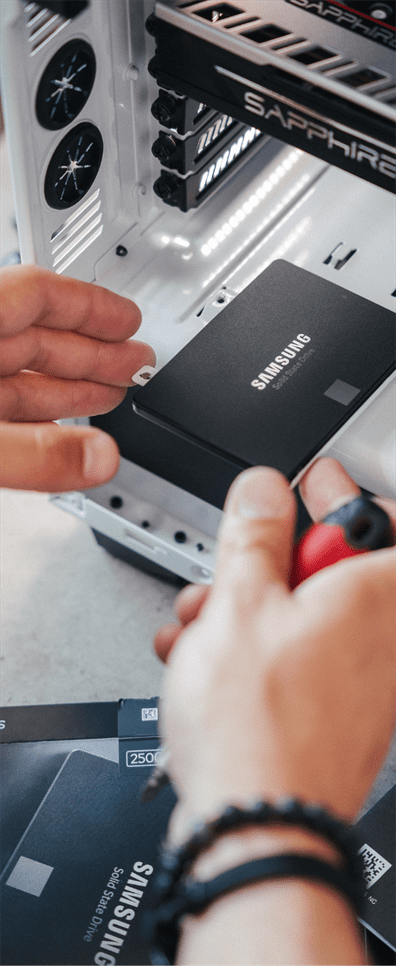
& Interfaces
For either storage type, connecting to your motherboard and power supply is very simple. The interface type you choose to use with your SSD or HDD can affect the speed, however.
SSD Form Factors
2.5": The first iterations of SSD, and using SATA interface, this form factor offers a compact drive for any size build
M.2 2280: The most common M.2 form factor, and widely adopted by many manufacturers in fast speeds and high capacities. First two digits (22) is the width in millimetres, and last two digits represent the length in millimetres.
mSATA: Not a very common SSD storage drive, and usually seen in laptops rather than desktop.
M.2 2242: Another popular SSD in laptops, and less popular in desktops over the M.2 2280 form factor, due to capacities and pricing
PCIe Card: Ideal for older motherboards that do not support M.2 NVMe
HHHL: Half height-Half Length PCIe cards that are large capacity and performance driven for Enterprise and business. Less common in retail, and mostly sold in the second user market.
SSD Interfaces
M.2: Manufactured with or without heatsinks/heat spreaders, M.2 is both an interface and a form factor. The key specification to look for is PCIe version and NVMe interface, which relates to how fast the M.2 storage is.
PCI Express NVMe: Offers various versions and high speeds. You will see these specifications as the PCIe version number, followed by the connector type/bandwidth it is capable of e.g. PCIe 3.0 x4 NVMe, PCIe 4.0 x4 NVMe & PCIe 4.0. x8 NVMe.
SATA III: The fastest and most current version of the SATA interface/connection.
U.2: Mostly used in Enterprise and business, U.2 is a Serial Attached SCSI (SAS) or PCIe connection
HDD Interface
Though SSD has a myriad of connections and form factors, HDD uses one reliable connection for consumers - SATA III.
Overall, HDD is a lot less flexible than SSD due to this. NVMe SSDs are installed directly on motherboards, saving plenty of space. They're easier to install too - making the perfect for small form-factor builds and gaming laptops.
While SSD and HDD are both decent options for storage, there are obvious differences and benefits to using both of them.
The general consensus is that HDDs are now becoming outdated and slow in comparison to NVMe SSD, and that SSDs are generally what you’ll want to be using when it comes to selecting storage for most systems.
SSDs have faster read and write speed than their HDD counterparts, which helps speed up key processes in computers and other similar devices.
SSDs generally improve performance all around your device — whether you’re gaming, browsing, or doing anything else that requires using a core set of files, an SSD will benefit you immensely. This is the reason why it’s so beneficial to invest in a good storage system, as an HDD will be slow and mean that your computer will inevitably face low write speeds all over your system.
With this, you’ll want to invest in an SSD no matter what for computing and other related needs. The higher cost is much more necessary now, as the discrepancy between HDD and SSD speeds is much larger than is convenient — even if on a budget build.
However, you don’t have to commit to one storage solution in your system. The general advice given to novice PC builders is to buy a single SSD to place all core system files and other programs onto, and then store all other files that don’t require the faster write time on a much larger SSD.
For example, if you require 4TB of storage — buying a 1TB M.2. NVMe SSD for your core system files and programs and a 3TB HDD for file storage can be more economically beneficial than buying a 4TB SSD. However, it’s still best to upgrade to an SSD in the long term as the write speeds on an SSD save so much time.
If you’re using a system that solely requires file storage — such as a media server — the benefits of an SSD may not outweigh the lower cost per TB/GB of a hard drive.
Overall, you’re not limited to using one type of storage in your system. Hybrid setups are a great way to get started for budget-conscious users, but SSDs are generally better all-around than their HDD counterparts.
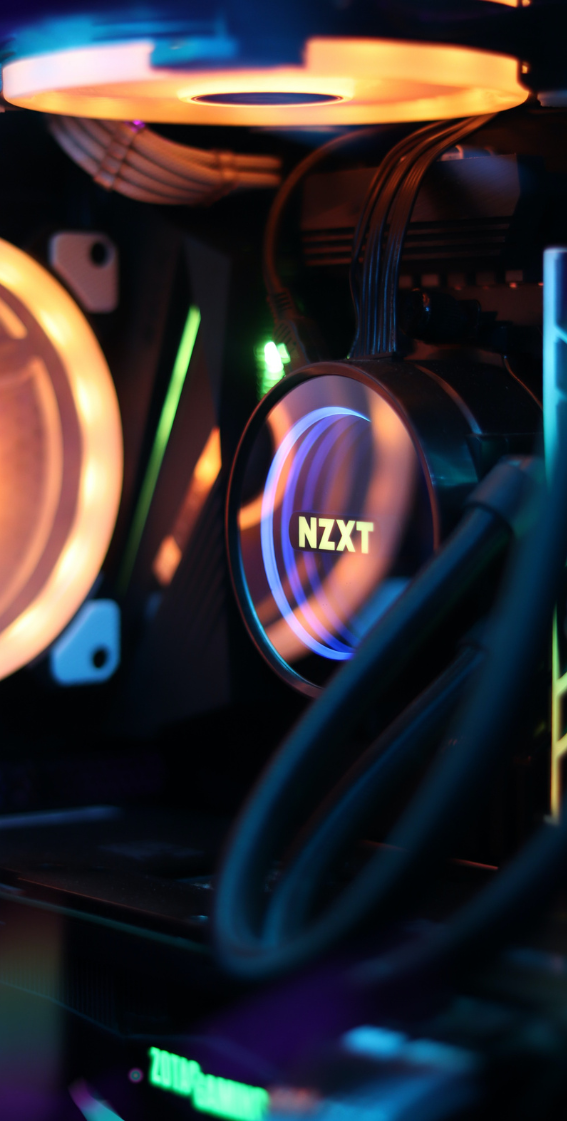
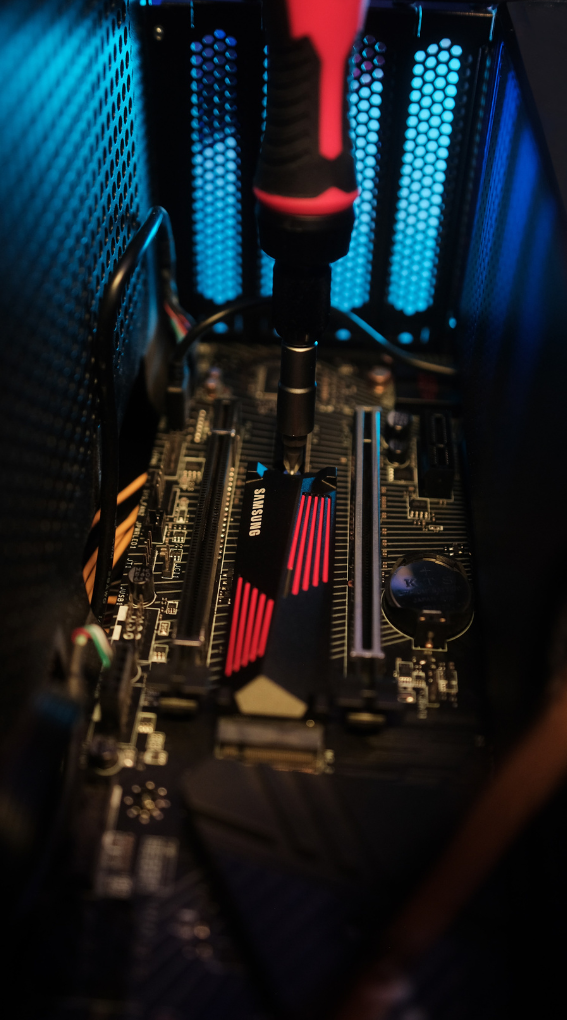
To put it simply, SSD storage. Much like the difference between any newer and older computer component, SSDs are now the industry standard for a reason. Their unparalleled write speed means that they’re a must-have for any system.
To work out how much storage you’ll need, consider how large the files that you’ll be using are. Take a look at your existing systems and see how much storage capacity has been used, and that’ll give you a good idea of how much storage you’ll need straight away.
Using that information, consider how much storage you’ll need going forward. It’s always advisable to buy lots of extra storage, to ensure that you don’t run out of storage space. However, you don’t need to invest in heaps of extra storage. Just enough of a buffer so that if you need to upgrade, you don’t run out of space instantly. When you need to upgrade in the future, you can always add more storage drives.
Generally, it’s preferred by most to put all of your system files and important program files onto NVMe storage. This is because NVMe drives generally have higher performance than SATA. The NVMe form factor is also generally favoured due to being easy to install onto the motherboard and taking up very little space in your PC build.
Therefore, for computers M.2. NVMe SSD is the first place to look, as this is the best storage that you’ll get. If you’ve used your M.2. drive and have the PCIe slots to spare, then an NVMe expansion card is the next best solution for top performance. Otherwise, a SATA SSD is still good for file storage and basic functions and has a very good write speed when compared to HDDs.
Generally, HDDs are outdated but can still be useful when used to support an SSD-based system. These drives are much slower and have a much shorter lifespan compared to SSDs. Generally, avoid buying these unless you really need to or you only need them for cheap, temporary bulk file storage where performance isn’t important.
Solid-State Drives (SSDs) are storage drives that use non-volatile flash memory. These files are much faster than HDDs and require less power, as HDDs have rotating platters that need power to turn.
SSDs are "solid-state", and therefore just use memory chips to make information accessible without the need for moving parts. This allows for higher performance and astronomical write speeds.
Hard Disk Drives (HDDs) are storage devices that use a rotating magnetic disc to share information and files with a device motherboard.
HDDs used to be the worldwide standard for file storage, however, SSDs are much faster and have replaced them in general use. As they use mechanical components, hard drives are fragile and more susceptible to failure.
External storage drives are incredibly useful if you need to access data on multiple devices frequently. Rather than connecting through SATA or PCIe, these drives connect using USB. This makes plugging the drive into a new computer far easier, as you can just use a USB port.
Generally, SSD storage is best for everyone. This is because of the high speeds and general performance that comes with SSD storage as compared to HDD storage, as well as the general durability of SSDs. SSDs last over 5 years, whereas HDDs tend to only last up to 4.
There’s a host of different form factors and options for SSDs to choose from. Generally, NVMe is better — all modern motherboards will have an M.2. drive port which will let you connect an M.2. drive. Otherwise, you can use a PCIe expansion slot on your PC with an adapter card to connect NVMe drives.
SATA SSDs are still good, just slower than their NVMe counterparts. The difference is noticeable, however nowhere near as far as the jump in performance speeds between SSD and HDD.
Nobody likes loading screens or slow load times for levels in general. An SSD is far faster than an HDD and eviscerates load times, meaning you can spend more time gaming instead of waiting to play your favourite games.
Creators will greatly benefit from the speed that comes with SSD usage. The need to constantly edit and access files as well as save files means that with an HDD, you’ll be waiting far longer to access the files you need than with an SSD.
We still recommend using an SSD for general-use applications. This is because the speed of an affordable SSD will dramatically speed up your PC’s boot time and will overall make the experience of whizzing through your OS feel snappier.
If you don’t do anything particularly demanding like video editing or gaming, and you need everyday productivity (spreadsheets, email etc.) you can get away with using a SATA SSD instead of an M.2. NVMe SSD.
For general use, we recommend the 500GB SATA III Solid State Drives. If you’re using your computer for everyday tasks, you’re unlikely to benefit from the transfer speeds of an M.2 NVMe. A SATA SSD keeps your computing experience snappy on a budget!